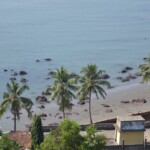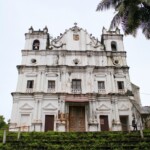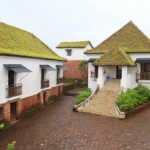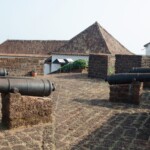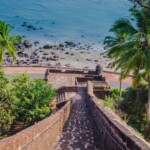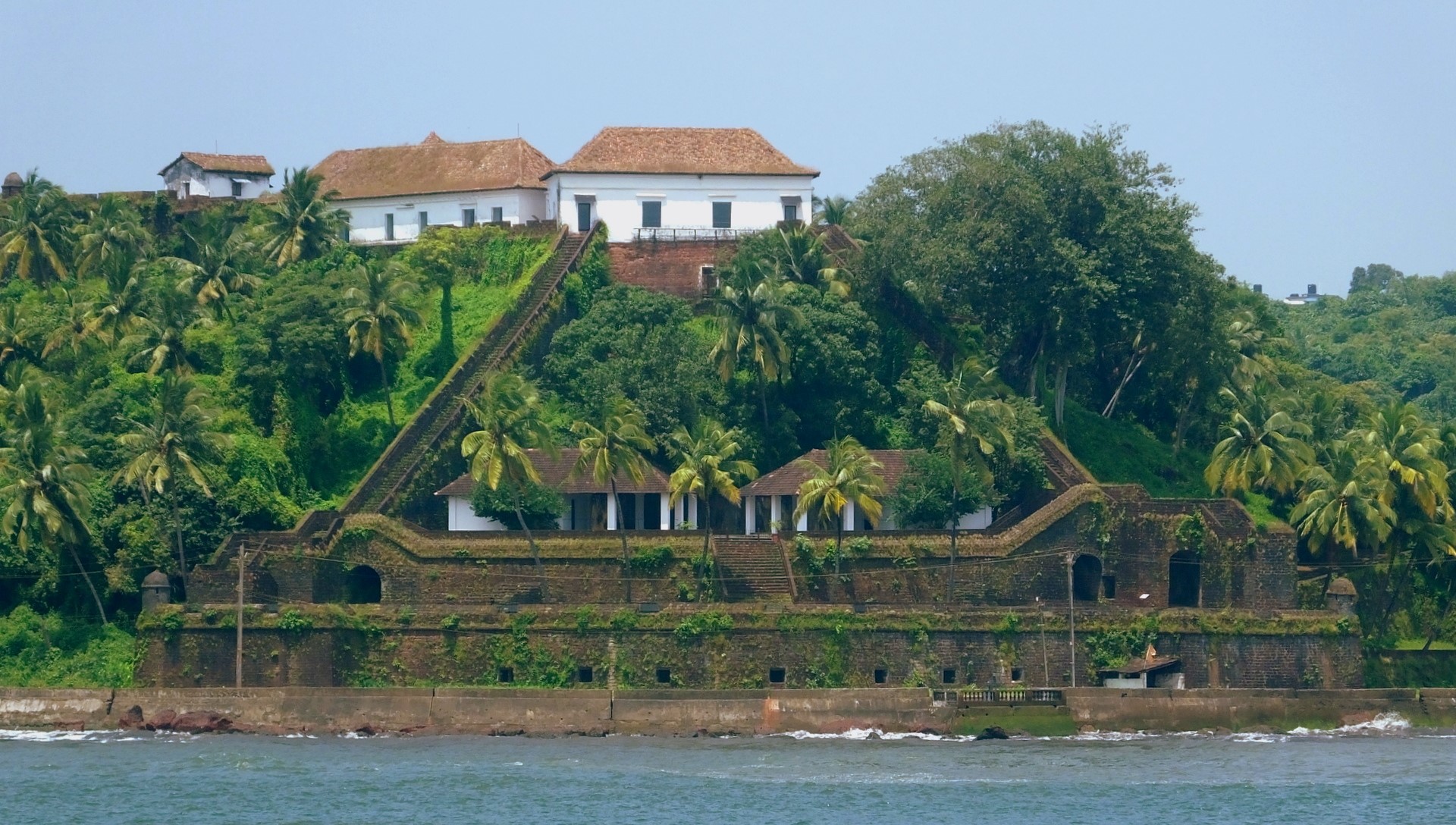
Reis Magos Fort is a striking heritage site situated on a rocky outcrop overlooking the northern bank of the Mandovi River in Bardez, North Goa, just across from Panaji. Its name, meaning “Three Wise Men” in Portuguese, reflects its deep colonial roots and connection to the nearby Reis Magos Church—the oldest church in the Bardez region—together forming a significant chapter in Goa’s historical and religious landscape.
Visitor Information – Reis Magos Fort
1. Location:
Reis Magos Fort is located in Verem village, in the Bardez region of North Goa, approximately 8 to 9 km from Panaji. It’s easily reachable by road or via a short ferry ride across the Mandovi River.
2. Timings:
The fort welcomes visitors from Tuesday to Sunday, operating between 9:30 AM and 5:00 or 5:30 PM. Please note, the fort remains closed on Mondays.
3. Entry Charges:
- Adults: ₹50
- Students: ₹25 (varies by source)
- Special Rate: ₹10 on Sundays and state-recognized holidays in Goa
- Children under 8 years: Free entry
4. Suggested Visit Duration:
Plan to spend 1 to 3 hours exploring the fort’s art galleries, historical exhibits, defensive walls, and scenic viewpoints. You may also want to include a visit to the nearby Reis Magos Church or stop by a riverside café for a relaxed experience.
History of Reis Magos Fort
Reis Magos Fort has a rich and layered history that reflects Goa’s complex colonial past. Its story begins in 1493, when the site was first occupied by the Adil Shahi dynasty of Bijapur, who built a small outpost for military purposes. However, the true transformation of the site began in 1541, when the Portuguese gained control over Bardez and recognized its strategic importance in guarding the narrowest stretch of the Mandovi River estuary.
In 1551, the Portuguese constructed the original version of the fort, and later, in 1707, it was extensively rebuilt and fortified to withstand invasions. Throughout the 17th and 18th centuries, the fort played a crucial role in defending Goa against repeated Maratha attacks. Its elevated position and armament of 33 cannons made it a formidable coastal defense structure.
During peacetime, the fort also served as the first residence for Portuguese viceroys arriving from Lisbon, before they proceeded to Old Goa. In the British era, the fort was temporarily occupied by British forces from 1798 to 1813, during the Napoleonic Wars, when Portugal was under threat in Europe.
In later years, the fort’s military significance declined, and it was repurposed as a prison, a role it served until 1993. After decades of neglect, a major restoration project was launched in 2008 by INTACH, the Goa Government, and the Helen Hamlyn Trust. The fort was beautifully restored and reopened to the public in June 2012, now functioning as a cultural and historical museum showcasing Goa’s heritage.
From a medieval outpost to a symbol of Portuguese military might, and now a vibrant heritage site, Reis Magos Fort is a living monument to Goa’s enduring historical legacy.
Architecture & Structure of Reis Magos Fort
The architecture of Reis Magos Fort is a fine example of Portuguese military design, adapted to the Goan landscape using local materials and traditional techniques. Built primarily with laterite stone, the fort features robust, reddish-brown walls that blend into the surrounding terrain while offering strong defensive capabilities.
Key Architectural Features:
1. Sloping Walls & Ramparts:
The fort’s angled laterite walls are designed to absorb cannon fire and deflect attacks. These high ramparts provide strategic views over the Mandovi River, essential for monitoring enemy approach from sea or land.
2. Cylindrical Bastions & Turrets:
The corners of the fort are flanked by rounded bastions, some of which still house old Portuguese cannons. Originally, the fort had 33 cannons, though only a few remain today.
3. Guard Towers & Lookouts:
Strategically placed watchtowers were used to keep a constant lookout over the river and coastline, enabling quick response to threats.
4. The “Death Hole”:
A unique medieval defense mechanism, the death hole was used to pour hot oil or other substances on invaders trying to breach the gates.
5. Freshwater Spring:
A natural spring within the fort provided fresh water for soldiers and occupants, a rare and valuable feature in fort architecture.
6. Interior Layout:
Inside the fort, there are multi-level courtyards, prison cells, armoury rooms, living quarters, and a chapel. The uppermost terrace offers sweeping views of Panaji, the Mandovi estuary, and even the Arabian Sea in the distance.
7. Blend of Styles:
While the fort’s core structure is militaristic, some elements reflect Portuguese aesthetics—such as arched entrances, stucco details, and vaulted interiors in the chapel and galleries.
Why Visit Reis Magos Fort
Reis Magos Fort offers more than just scenic views—it’s a richly layered experience blending history, architecture, art, and culture. Here’s why it deserves a place on your Goa itinerary:
1. Step into Goa’s Colonial Past
Walk through the fort’s restored corridors, prison cells, and artillery rooms to discover the 400-year legacy of Portuguese rule, Maratha resistance, and British occupation. The fort tells the story of Goa’s transformation through war, trade, and diplomacy.
2. Marvel at Military Architecture
Admire the fort’s laterite stone walls, cylindrical bastions, cannon placements, and clever defensive elements like the “death hole.” It’s a rare, well-preserved example of Portuguese military engineering in India.
3. Explore Culture & Art
Inside, you’ll find engaging galleries, including:
- The Freedom Fighters’ Gallery highlighting Goa’s liberation struggle
- A dedicated section showcasing artworks by Mario Miranda, Goa’s legendary cartoonist
- Exhibits detailing the restoration process and history of the site
4. Capture Stunning Views
The elevated ramparts provide panoramic views of the Mandovi River, the capital city Panaji, nearby villages, and even the distant Arabian Sea—especially breathtaking at sunset.
5. Visit Goa’s Oldest Church in Bardez
Right next to the fort is the Reis Magos Church, built in 1555. Visiting both allows you to experience a blend of military and religious heritage in one tranquil riverside setting.
6. A Peaceful Alternative to Crowded Spots
Compared to more commercial tourist hubs, Reis Magos Fort offers a quiet, reflective atmosphere—ideal for slow exploration, learning, and photography.
Images of Reis Magos Fort
How to Reach Reis Magos Fort, Goa
Reis Magos Fort is located in Verem village, Bardez, North Goa, about 8–9 km from Panaji. It is easily accessible by road or river from major tourist hubs like Panaji, Calangute, Candolim, and Mapusa.
1. By Road
- From Panaji: Approx. 20-minute drive via the Mandovi Bridge → Betim → Verem.
- From Calangute/Candolim: Around 20–25 minutes by taxi or scooter.
- Parking: Limited space near the base of the fort. Be prepared to walk uphill via a flight of stone steps.
2. Transport Options:
- Taxi or Auto-Rickshaw: Easily available from major towns and beaches.
- Self-Drive (Car/Scooter): Ideal for flexibility; rental bikes and cars are widely available in Goa.
- Bike Taxis (Pilot): A local, budget-friendly way to reach the fort from nearby areas.
3. By Ferry
- Panaji to Betim Ferry: Cross the Mandovi River via the free ferry service from Panaji to Betim (for pedestrians, two-wheelers, and cars).
- From Betim, it’s a short 3–4 km drive or ride to the fort.
4. By Bus (Limited)
Public buses run between Panaji and Verem/Betim, but service is infrequent. You may need to walk or take an auto from the drop-off point to the fort.
Best Time to Visit Reis Magos Fort
The ideal time to visit Reis Magos Fort is during the cooler and drier months, when the weather is pleasant and the views are clearest.
Best Season: November to February
Why: This is Goa’s winter season with temperatures ranging between 22°C to 30°C—perfect for walking around the fort and enjoying river views.
What to Expect: Clear skies, low humidity, and beautiful sunsets. Great for photography and combining your visit with nearby attractions.
Best Time of Day:
Morning (9:30 AM – 11:30 AM): Beat the heat and crowds; soft morning light is perfect for photos.
Late Afternoon (3:30 PM – 5:30 PM): Ideal for scenic views and watching the sunset over the Mandovi River.
Tips for Visiting Reis Magos Fort
1. What to Wear & Carry
- Comfortable footwear is a must—the approach includes a steep staircase and uneven stone paths.
- Wear light, breathable clothes and sunscreen, especially in warmer months.
- Carry a hat or cap, sunglasses, and a water bottle to stay hydrated.
- A camera or phone with storage—this spot is scenic and photogenic!
2. Timing Your Visit
- Arrive early in the morning or late in the afternoon to avoid heat and enjoy soft lighting for photography.
- Allocate 1–2 hours for a relaxed tour of the galleries, bastions, and views.
- Avoid Mondays—the fort is closed.
3. Photo Opportunities
- Best views are from the upper ramparts—sunset views of Panaji and the Mandovi River are stunning.
- The interior galleries also offer unique backdrops, especially the Mario Miranda illustrations.
4. Getting There
- Parking is limited—consider hiring a cab, two-wheeler, or using the ferry to Betim from Panaji.
- Expect a short uphill walk from the parking area.
5. Cultural Etiquette
- Respect the fort’s heritage status—do not climb on walls, litter, or deface surfaces.
- Keep voices low inside galleries; it’s a place of historical reflection.
- Visit the adjacent Reis Magos Church (built in 1555) for a complete heritage experience.
6. Nearby Food & Relaxation
- Explore nearby riverside cafes like The Lazy Goose or stop at eateries in Verem and Candolim.
- Great place for combining with a half-day trip including beaches or Panaji city.
Nearby Attractions Around Reis Magos Fort
Reis Magos Fort is located in Verem, North Goa—surrounded by scenic, cultural, and historic destinations worth exploring. Here are some must-visit spots nearby:
1. Reis Magos Church (Right beside the fort)
- Built in 1555, this is the oldest church in Bardez.
- Known for its stunning white façade, baroque architecture, and annual Feast of the Three Kings.
- Don’t miss the peaceful courtyard and panoramic views from the church steps.
2. Coco Beach (Approx. 2 km)
- Quiet and less commercialized.
- Ideal for dolphin-spotting boat rides, photography, and a peaceful riverside experience.
3. Mandovi River Cruise Point (Panaji Side) (Approx. 8–9 km)
- Located just across the river.
- Offers sunset cruises, cultural dance shows, and floating casinos like Deltin Royale and Casino Pride.
4. Fontainhas (Latin Quarter) (Approx. 8 km)
- A heritage neighborhood in Panaji, known for colorful Portuguese-era homes, art galleries, and cafés.
- Great for a walking tour through narrow lanes full of colonial charm.
5. Salim Ali Bird Sanctuary (Approx. 6 km via ferry)
- Located on Chorao Island, accessible via a short ferry ride from Ribandar.
- Best for nature lovers, offering mangrove trails and opportunities to spot kingfishers, egrets, and other bird species.
6. Candolim Beach (Approx. 5–6 km)
- A clean and less crowded beach compared to Calangute.
- Good for relaxing, dining at beach shacks, or visiting the nearby Aguada Fort.
7. Aguada Fort & Lighthouse (Approx. 8 km)
- Another famous Portuguese fort overlooking the sea.
- Features a 17th-century lighthouse and prison cells, with beautiful views of the Arabian Sea.

